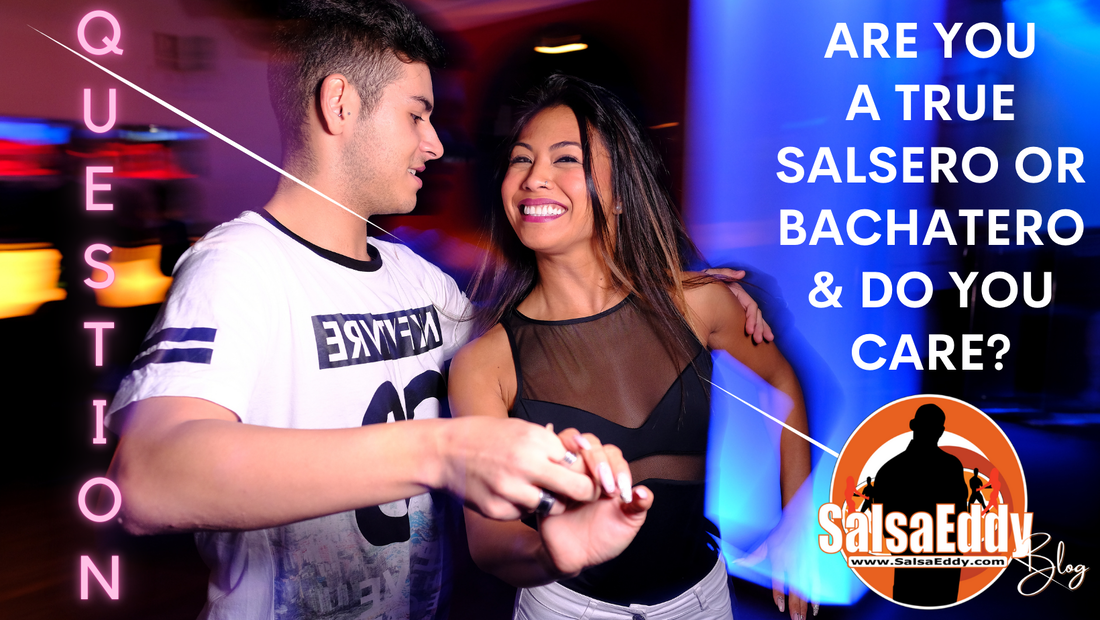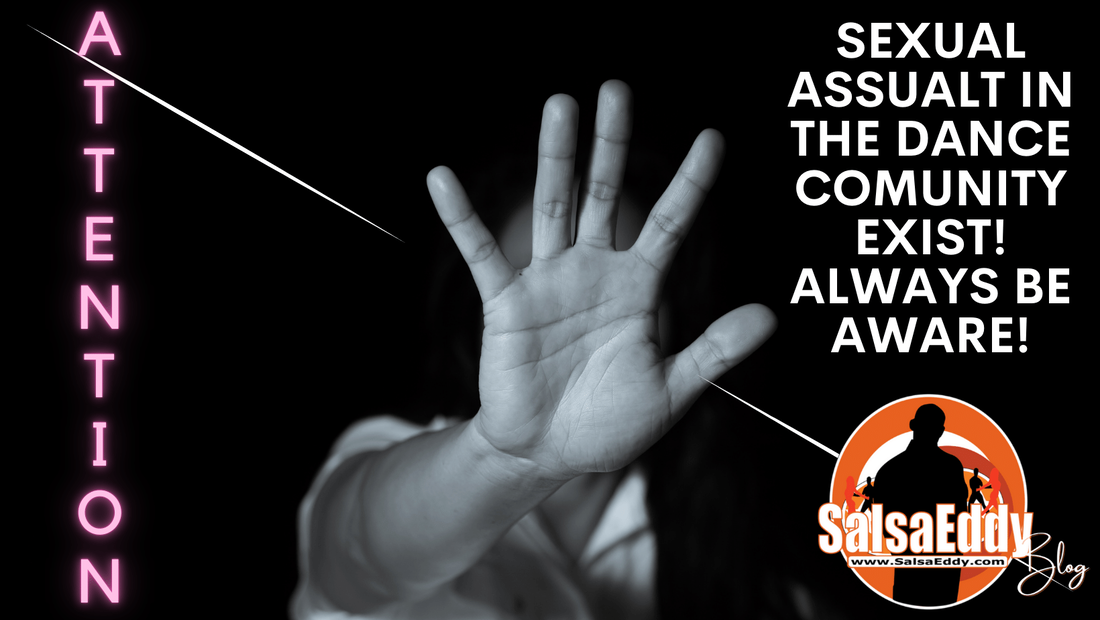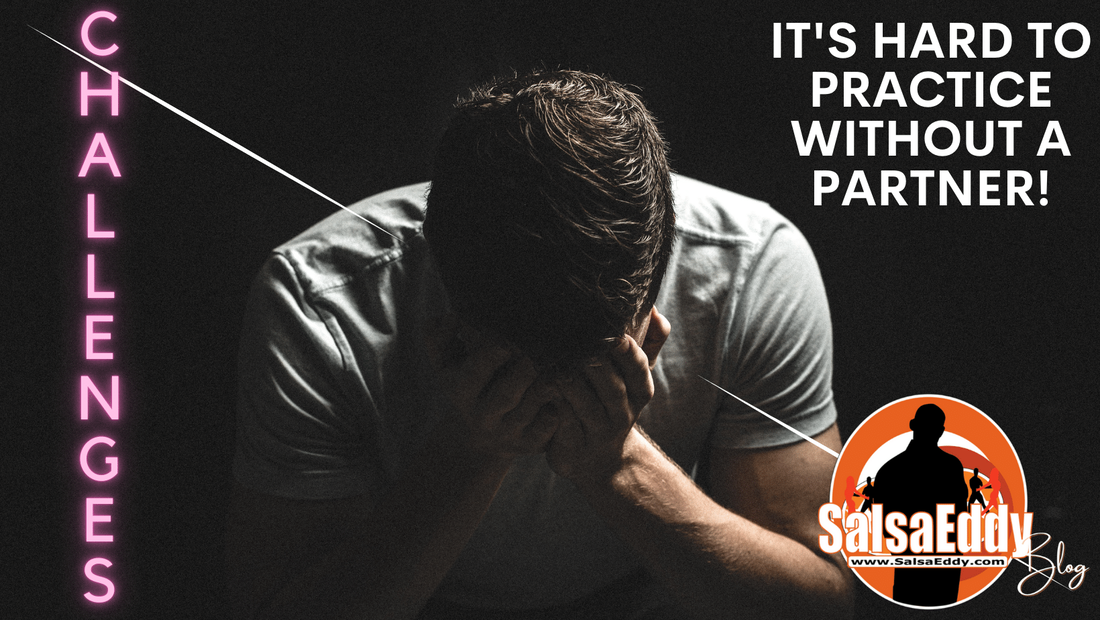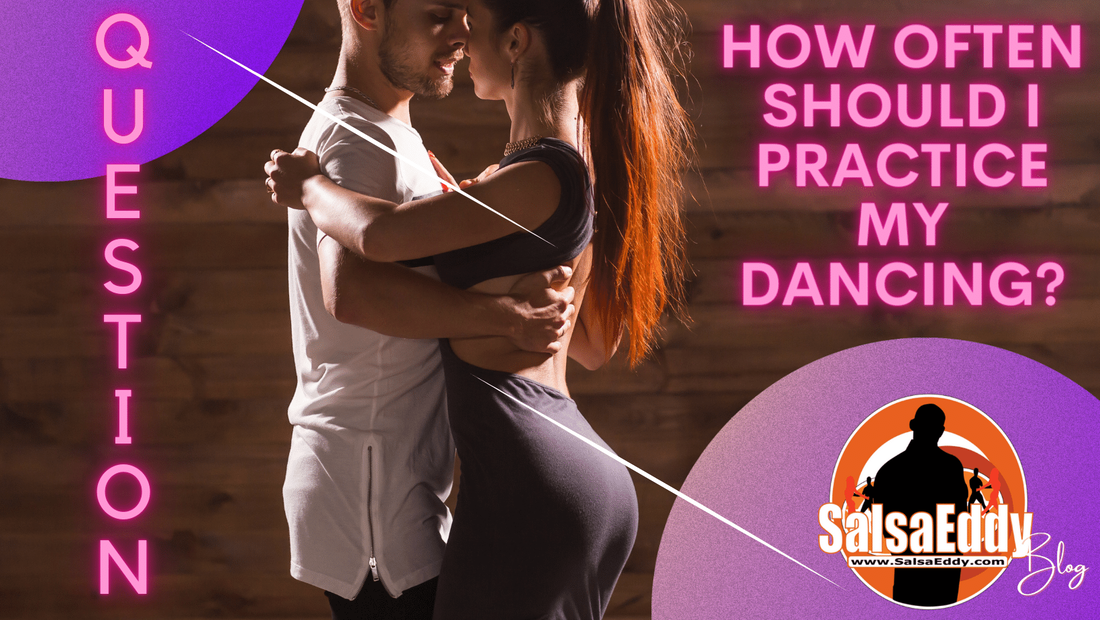|
It can be difficult to determine whether a dance instructor is only interested in your money, but here are some signs that might indicate this:
1. Pushing expensive classes or private lessons: If a dance instructor is constantly pushing you to take expensive classes or private lessons, it may suggest that they are more interested in making money than helping you improve your dancing skills. 2. Lack of personalized attention: If your dance instructor seems disinterested in your progress or doesn't provide personalized feedback, it could be a sign that they are solely focused on getting paid rather than helping you improve. 3. Refusal to answer questions or provide explanations: If your dance instructor refuses to answer your questions or provide detailed explanations about the techniques they are teaching you, it may suggest that they are more interested in keeping you dependent on their instruction, rather than empowering you to learn on your own. 4. High-pressure sales tactics: If a dance instructor uses high-pressure sales tactics to get you to sign up for classes or lessons, it may indicate that they are more interested in making a sale than in helping you achieve your goals. 5. Lack of transparency: If a dance instructor is not transparent about their fees, policies, or other important details, it may suggest that they are not trustworthy and may be more interested in taking your money than providing quality instruction. It's important to remember that not all dance instructors who charge for their services are only interested in your money. However, if you notice multiple red flags, it may be worth considering finding a different instructor who is more focused on helping you improve your skills rather than just making a profit.
Not all instructors get mad if their students go to other instructors to learn, but some might feel offended or upset if they perceive it as a lack of loyalty or commitment to their teaching. Dance instructors, like any other professionals, invest a lot of time and effort in developing their skills and building their reputation. When students seek instruction from other teachers, it can be seen as a sign that the instructor is not meeting their needs or expectations. Additionally, some instructors may feel that their methods or techniques are superior to those of other instructors, and therefore, feel that their students should not seek instruction elsewhere. They may also worry that their students will pick up bad habits or conflicting information from other teachers. However, it's important to remember that it's entirely normal and even beneficial to seek instruction from different teachers. Different instructors have different styles, approaches, and areas of expertise, and exposing yourself to a variety of teaching methods can help you become a more well-rounded dancer. Instructors who are confident in their abilities and have a genuine interest in their students' progress will encourage them to seek out different perspectives and experiences to enhance their learning. If an instructor becomes angry or upset about their students seeking instruction elsewhere, it may be a sign of insecurity or a lack of focus on the student's needs.
It's possible that an instructor may be afraid of losing business to the competition if their students seek instruction elsewhere, but this is not always the case. It's important to remember that dance instructors are people with varying motivations and concerns, and there could be many reasons why an instructor might react negatively to their students seeking instruction from other teachers. Some instructors may be protective of their students and genuinely believe that they are providing the best instruction. They may worry that their students will be misled or confused by conflicting information from other instructors, or develop bad habits that will be difficult to correct later on. Others may be concerned about their reputation as a teacher and worry that their students seeking instruction elsewhere signals a lack of faith in their abilities. They may fear that their students will spread negative reviews or opinions about their instruction to others. Still, others may view their students as a source of income and may be worried about losing business to the competition. In some cases, instructors may try to pressure their students to stay with them by using guilt, manipulation, or other tactics. Ultimately, it's up to each individual instructor to decide how they react to their students seeking instruction elsewhere, but it's important for them to prioritize their students' needs and interests above their own personal concerns or motivations. Good instructors are committed to helping their students achieve their goals, regardless of where they seek instruction or guidance.
No, an instructor should not be mean or discouraging to a student who decides to leave to learn from someone else. While it can be disappointing to lose a student, it's important for instructors to remember that students have the right to choose who they learn from and what works best for them. Being negative or confrontational with a student who has decided to switch instructors can create a negative experience for the student and potentially damage the instructor's reputation. It is much better for instructors to remain professional, supportive, and respectful, even if they may be disappointed. Instead of being mean or discouraging, instructors can use this experience as an opportunity for growth and self-reflection. They can ask their former student for feedback and take the opportunity to learn and improve their teaching methods. They can also focus on attracting and retaining new students by providing quality instruction and building positive relationships. Ultimately, instructors should prioritize their students' needs and interests above their own personal concerns or motivations. Good instructors are committed to helping their students achieve their goals, regardless of whether they choose to continue learning with them or seek instruction elsewhere.
If an instructor talks negatively about another instructor just to discourage a student from trying their classes, it could be considered unprofessional and unethical behavior. This behavior is commonly known as "poaching" and is considered to be a form of anti-competitive behavior. Dance instructors should focus on providing quality instruction and building positive relationships with their students, rather than trying to prevent them from seeking instruction from other teachers. Talking negatively about another instructor can create a negative impression on the student and may ultimately harm the instructor's reputation. Furthermore, it is not fair to the student to limit their options or opportunities to learn from different instructors. Each instructor has their own style, approach, and areas of expertise, and it's important for students to be able to explore different perspectives and experiences to enhance their learning. Instead of talking negatively about other instructors, instructors should focus on building their own reputation as a quality teacher and providing a positive learning experience for their students. They can do this by demonstrating their own expertise, providing quality instruction, and building positive relationships with their students. I hope this helps. Thank you for taking the time to read this.
0 Comments
Finding the right dance instructor can be an important factor in your dance journey. Here are some tips to help you find the right dance instructor for you:
Remember, finding the right dance instructor may take some time and research, but it's worth it to find someone who can help you achieve your dance goals and make the learning process enjoyable. By considering these factors and taking the time to find the right dance instructor, you'll be setting yourself up for success and enjoyment in your dance journey. Common thing that happens in every partner dance: Is Backleading Beneficial or Detrimental? Let's find out...
Backleading in social dancing refers to a follower attempting to anticipate or control the leader's movements, rather than responding to their lead. This can occur for various reasons, and it's important to remember that not all followers, regardless of gender, will engage in backleading. However, some potential reasons why a female follower might backlead: 1. Lack of trust or patience: A follower may not trust their leader to execute certain moves or patterns, or they may feel impatient and try to speed up the dance by backleading.
2. Inexperience: Some inexperienced followers may not have fully grasped the concept of following and may unintentionally backlead as they try to keep up with the dance.
3. Overconfidence: A follower who is confident in their abilities might feel they know what the leader should be doing, and may try to take control of the dance by backleading.
5. Teaching or helping: In some cases, a more experienced follower might think they are helping a less experienced leader by backleading, guiding them through moves or patterns they might not be familiar with.
It's important to note that backleading can hinder the development of both the leader and follower's dance skills. It can lead to miscommunication and frustration between partners, as well as impede the natural flow of the dance. Both leaders and followers should strive to improve their respective roles and communicate openly with their partners to address any issues that arise. I hope this helps not for the follower but, also the lead. What make you a true Salsero(a) or Bachataero(a)...
If you dance, listen to salsa or bachata regularly and have a passion for these dance styles & music, then you can consider yourself a Salsero(a) or Bachatero(a). These terms are often used to describe people who are enthusiastic about these Latin dance styles, music, the history and actively participate in the dance community. Being a Salsero(a) or Bachatero(a) involves more than just knowing the basic steps of these dances. It also means immersing yourself in the culture surrounding these dance styles, learning about their history and evolution, and developing a deep appreciation for the music, artists that accompanies them. Many Salseros(as) and Bachateros(as) also attend social dance events, clubs, congresses, conventions, festivals, take classes and workshops to improve their technique, and participate in competitions and performances. Some even travel to other parts of the world to experience different styles of salsa and bachata and to connect with dancers from other cultures. Salseros(as) and Bachateros(as) often have a deep love for music and actively seek out new and old hits to share with others at social dance events, clubs, congresses, conventions, and festivals. Some are passionate music collectors or DJs who are always on the lookout for new or classic tracks to add to their collections. Some even travel to other parts of the world to discover new music. Whether they are music lovers or professionals, Salseros(as) and Bachateros(as) embrace the rich history and diverse range of music that accompanies these dance styles. It's very important (somewhat) a requirement to be a Salsero(a) or Bachatero(a) to know the music and artists that sing the music, having knowledge about the music can enhance your understanding and appreciation of these dance styles. Salsa and bachata music have rich histories and are deeply embedded in the cultures from which they originate. Learning about the artists, composers, and musicians who create this music can help you better interpret the nuances of the music and connect with it on a deeper level. Additionally, understanding the lyrics of the songs can help you express the emotion and story of the music through your dance. Many Salseros(as) and Bachateros(as) have a deep passion for the music that accompanies these dances and actively seek out new music or awesome classics to dance to. They may attend concerts, listen to music on their own time, and share their favorite songs with other dancers, DJs and musicians in the community. Ultimately, being a Salsero(a) or Bachatero(a) is about embracing the culture, passion, joy, and connection that these dance styles and music can bring to your life. Keep evolving, educating and growing. It's keeps the community healthy and strong. Share it with others to continue this culture for many generations to come. If you don't care, enjoy it as a hobby. Sexual assault is a serious issue that affects many men & women, and it's important to take steps to protect yourself and reduce your risk in the dance scene.
Here are some tips to help prevent sexual assault: 1. Be aware of your surroundings in a dance studio or club is important for your safety. Here are some tips to help you stay aware:
2. Re-emphasizing it, trust your instincts: If you feel uneasy or uncomfortable in a situation, trust your gut and leave the area. 3. Stay sober: Drinking alcohol or using drugs can impair your judgment and make you more vulnerable to sexual assault. 4. Travel with a friend: If possible, travel with a friend or in a group. Once again, there is safety in numbers. 5. Practice good communication: Be assertive and clear in communicating your boundaries to others. Don't be afraid to say no or to speak up if you feel uncomfortable. Remember that sexual assault is never the victim's fault. No matter what precautions you take, it's important to remember that the perpetrator is the one responsible for their actions. If you are a victim of sexual assault, it's important to seek help and support from trusted friends, family members, or professionals. Things to consider...
Always, remember no matter where you are "they are wolves among sheep". It's important to always keep in mind that there may be dangerous or predatory individuals in any given location or situation, even if most people are well-intentioned and harmless. In other words, there may be "wolves among sheep." Therefore, it's important to stay vigilant and be aware of your surroundings, take precautions to protect yourself, and trust your instincts if you feel uncomfortable or unsafe. As an instructor I get this comment alot & here is my response, enjoy...
It's understandable that practicing alone can be challenging, especially in partner dances where you rely on a partner to learn and practice specific moves. However, there are several ways to practice and improve your dance skills even without a partner. One option is to focus on your individual technique and footwork. You can work on improving your balance, posture, and body alignment by practicing basic dance steps and movements. This will not only improve your overall technique but also make you a stronger and more reliable partner when you do have one. Another option is to practice with a dance instructor or take group dance classes or go out social dancing where you can learn and practice with other dancers. This allows you to learn new moves, receive feedback, and practice with others who have similar skill levels. You can also practice visualization techniques, where you mentally rehearse dance routines and imagine yourself social dancing or performing them with a partner. This can help you develop a better sense of timing and rhythm, as well as improve your muscle memory. Overall, while it can be challenging to practice without a partner, there are several strategies you can use to continue improving your dance skills. Remember that consistent practice and dedication are key to becoming a good dancer, regardless of whether you have a partner or not. The million dollar question...
Becoming a good dancer requires consistent practice and dedication. The amount of practice needed to become a good dancer can vary depending on the individual and the style of dance they are interested in. As a general rule, it is recommended that dancers practice for at least several hours per week in order to see progress and improvement. This can be broken down into shorter practice sessions of 20-30 minutes each day or longer sessions of 1-2 hours a few times per week. Regular practice is important for several reasons. Firstly, it helps to develop muscle memory, which is crucial for social and performing dance movements with precision and fluidity. Secondly, consistent practice allows dancers to build stamina and endurance, which are necessary for longer songs. Finally, regular practice helps to build confidence and allows dancers to refine their technique, social and performance skills over time. However, it is important to note that the quality of practice is just as important as the quantity. A dancer who practices consistently but without proper technique and focus may not see the same level of improvement as someone who practices with intention and attention to detail. Therefore, it is important to prioritize quality over quantity when it comes to dance practice. |
Details
AuthorSalsaEddy a lover of the music & culture. Love to learn & share. Enjoy! Archives
January 2024
Categories |







 RSS Feed
RSS Feed
